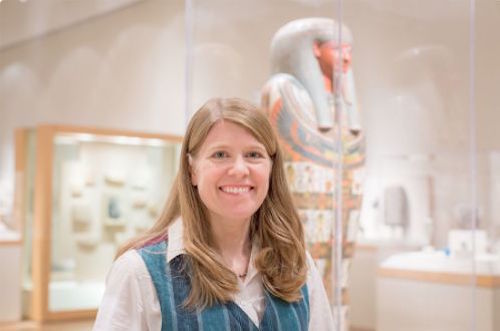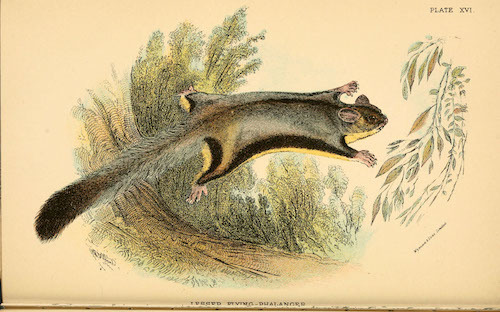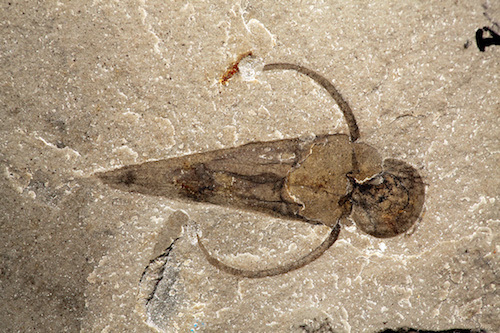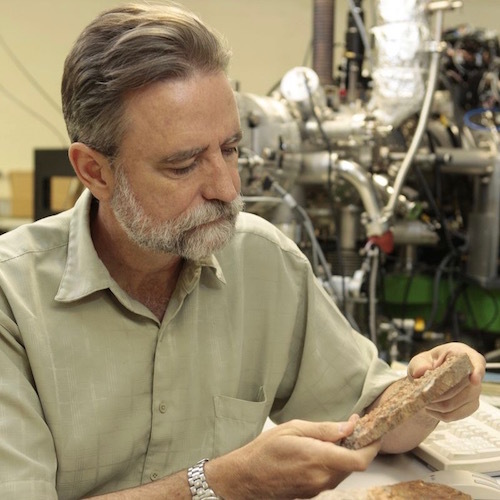Discovery Institute's Blog, page 9
January 19, 2017
Shutting Down the Evolution Debate, the "Mainstream Science" Way
We noted the other day our biologist colleague Cornelius Hunter's online adventure, parachuting into a discussion with theistic evolutionists over at the BioLogos website. The debate in a thread at their Open Forum, "What is Universal Common Descent?," is long and discursive. It runs to 212 entries so far. I can't claim to have read every word, but this struck me as telling.
At comment #203, Washington University's Joshua Swamidass weighs in, seeking to call a halt to the proceedings. It's...
University of Alabama "Space Archaeologist" Seeks Evidence of Intelligent Design

Sarah Parcak has been called a new Indiana Jones. Associate professor of anthropology at the University of Alabama at Birmingham, Parcak pioneered the use of satellite imagery to discover ruins, tombs, and more. Her field, "space archaeology," sounds like an oxymoron, but the technique is downright effective.
The Smithsonian awarded her their 2016 American Ingenuity Award and reported that "she and her team have expanded the civilization's [Egypt's] known scope, spotting more than 3,000 anci...
Book Stumps Decoders: Design Filter, Please?

Here's a new book about an old book. The new book was designed for a purpose: to try to understand an old book that's a mystery. We know the author of the new book; the author of the old book, the Voynich manuscript, is unknown. Raymond Clemens explores the mystery in The Voynich Manuscript (Yale University Press), examining "a work that has long defied decoders." Reviewing Clemens's book for Nature, Andrew Robinson calls our attention to this "calligraphic conundrum," providing another oppo...
Sugar Gliders, Flying Squirrels, and How Evolutionists Explain Away Uncooperative Data

The scientific evidence contradicts evolutionary theory. Consider, for example, the problem of tracing out the mammalian evolutionary tree.
According to evolution similar species should be neighbors on the evolutionary tree. For example, the flying squirrel and sugar glider certainly are similar -- they both sport distinctive "wings" stretching from arm to leg. Shouldn't they be neighboring species? The problem is that, while they have incredible similarities, they also have big differences...
January 18, 2017
Digging Deep in Biology: "Things Get Even More Complicated When You Look Closer"
"As is often the case in biology," the scientist and artist David Goodsell has observed, "things get even more complicated when you look closer." And that is the truth.
Yesterday started out as an ordinary Tuesday. Then I set out to read a recent paper published in the journal Cell, "Nuclear Localization of Mitochondrial TCA Cycle Enzymes as a Critical Step in Mammalian Zygotic Genome Activation," by R Nagaraj et al. It reported something rather odd that caught my eye. Very early embryos (at...
How Physicists Learned to Love the Multiverse

Theoretical physicist Tasneem Zehra Husain has an excellent article on the multiverse in this month's Nautilus. In this age of the expert whom we must trust to give us the truth, Husain's transparent and clear explanation of some of the underlying philosophical concerns regarding the multiverse is refreshing. I only wish that her writing was more aware of the historical plenitude traditions. Many of the philosophical concerns regarding the multiverse interact heavily with, or even are mandat...
Newly Classified Cambrian Creature Underlines the Mystery of Living Fossils

Science Daily reports somewhat breathlessly: "Paleontologists classify mysterious ancient cone-shaped sea creatures."
One branch on the tree of life is a bit more crowded today. A team of scientists led by 20-year-old University of Toronto (U of T) undergraduate student Joseph Moysiuk has finally determined what a bizarre group of extinct cone-shaped animals actually are.Known as hyoliths, these marine creatures evolved over 530 million years ago during the Cambrian period and are among the...
January 17, 2017
Turn Over Child-Raising to a Computer?

When our kids were small, my wife and I used a baby monitor. It was quite basic: We could hear our kids (when we left the volume up) and watch a jerky jiggle of red lights as noises ebbed and flowed. But the monitor kept us engaged with our kids. We knew better than to answer their every squeak and cry, but were concerned (and what young, new parents are not?) to know if some real danger or problem arose. The monitor covered the distance between our actual and imagined fears.
Our baby monito...
UCLA Geochemist: Life Arose "Almost Instantaneously" on Early Earth

Findings of "rapid evolution" seem to be coming at an ever-increasing pace. A recent example in the stream of these announcements is that with the discovery of graphite in a 4.1 billion-year-old zircon, life on Earth may have started, err, "almost instantaneously." As reported in 2015 in news from UCLA:
"Twenty years ago, this would have been heretical; finding evidence of life 3.8 billion years ago was shocking," said Mark Harrison, co-author of the research and a professor of geochemistry...
Listen: Bohlin, Hunter on a Parachute Operation into Discussion with Theistic Evolutionists

The Christian theistic evolutionary site BioLogos has a somewhat confusing feature, its Open Forum, covering a range of topics. Some headings sound random ("Joe claims ID is not anti-evolution") while others seem to promise a crisp discussion of a major subject, but then meander off into hundreds of comments, some relevant, some not, some serious, some just snarky or condescending put-downs.
I find it difficult to follow some of these threads, but I know that other readers do so and are trou...
Discovery Institute's Blog
- Discovery Institute's profile
- 15 followers




